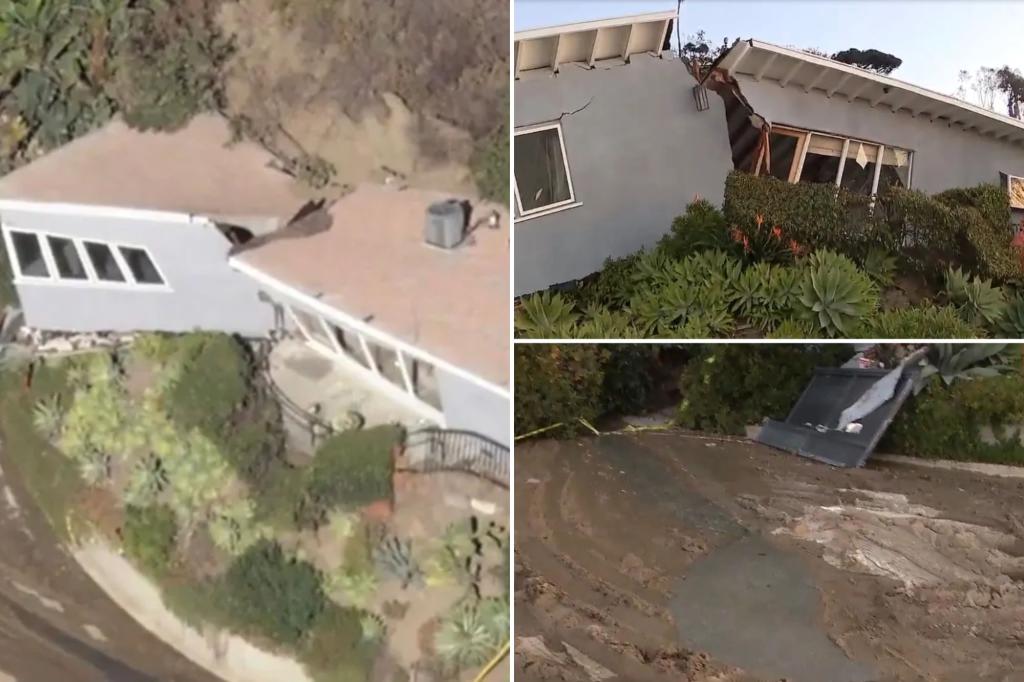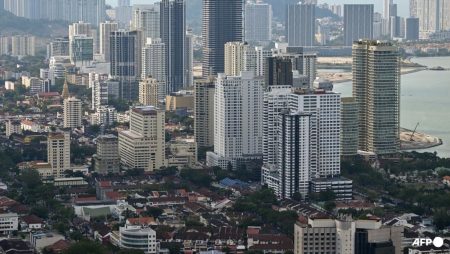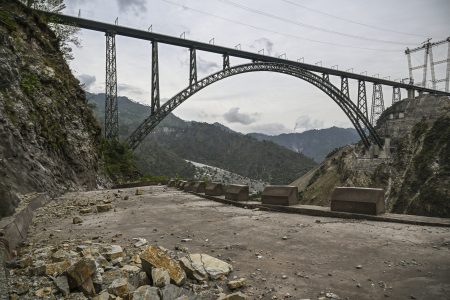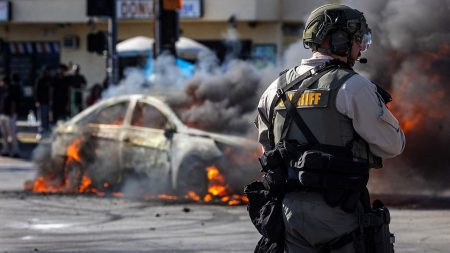The devastating wildfires that ravaged the Los Angeles area in recent weeks, fueled by fierce Santa Ana winds, left a trail of destruction in their wake, claiming at least 27 lives, consuming over 40,000 acres, and obliterating more than 12,300 structures. The blazes forced thousands to evacuate their homes, leaving a landscape scarred by fire and vulnerable to further disaster. One particularly striking example of the fires’ cascading impact is the story of a $2 million oceanfront home in Pacific Palisades. This property, miraculously spared from the flames themselves, met a different, equally destructive fate: it was cleaved in two by a mudslide, a stark reminder of the lingering dangers even after the fires subside.
This luxury home, situated near the Pacific Coast Highway and renting for $14,000 a month, became a victim not of the flames but of the aftermath. The combination of water runoff from firefighting efforts and the destabilized hillside created a perfect storm for a landslide. According to eyewitness accounts from a security guard patrolling the area, the mudslide originated from a neighboring property, cascading down and ultimately splitting the oceanfront home in half. This graphic illustration underscores the vulnerability of the fire-ravaged landscape, where even homes spared from the flames are at risk from secondary disasters. The incident serves as a grim warning of the ongoing threat posed by mudslides in the wake of wildfires, highlighting the interconnectedness of natural disasters and the extended period of vulnerability that follows.
The mudslide’s destruction of the oceanfront home brought to the forefront a critical concern emphasized by Mark Pestrella, Director of Los Angeles County Public Works. During a press conference, he issued a stern warning to residents returning to hillside homes, both within and outside the immediate fire zones. Pestrella stressed the fragility of the slopes in the aftermath of the fires, explaining that the supporting soil had been significantly weakened, increasing the risk of mudslides and debris flows even in the absence of rain. This precarious situation necessitates extreme caution for residents residing near slopes, urging them to be vigilant for any signs of instability and to prioritize safety above all else. The message is clear: the danger persists even after the flames are extinguished.
This heightened risk of mudslides following wildfires is not a localized phenomenon. Jayme Labor, a senior service hydrologist for the National Weather Service in Los Angeles, emphasized that all areas downstream of burned areas face heightened risk. The burn scars, she explained, typically require five to seven years to recover, leaving the landscape vulnerable to erosion and landslides for an extended period. This extended recovery period underscores the long-term impact of wildfires, extending far beyond the immediate devastation of the flames. It also highlights the need for continued vigilance and proactive measures to mitigate the risk of mudslides in the years following a wildfire.
The scientific basis for this increased risk is well-established. The U.S. Geological Survey (USGS) warns that wildfires significantly elevate the likelihood of mudslides and landslides. These post-fire landslides can be highly destructive, occurring with little warning and exerting tremendous force on anything in their path. They can strip vegetation, block drainage pathways, damage structures, and, most critically, endanger human life. The removal of vegetation by fire exposes the soil, making it susceptible to erosion by wind and water. This loss of ground cover, combined with the altered soil properties and the potential for hydrophobic soils (which repel water rather than absorbing it), creates a recipe for landslides.
The destruction of the Pacific Palisades home serves as a potent symbol of the broader challenges posed by the California wildfires. While the immediate focus is often on battling the flames and providing immediate relief to those affected, the long-term consequences, including the heightened risk of mudslides, must be addressed. This incident underscores the need for comprehensive post-fire recovery strategies that include measures to stabilize slopes, restore vegetation, and educate residents about the ongoing risks. It also highlights the importance of early warning systems and evacuation plans to protect lives and property in the event of mudslides. The tragic loss of this home, though spared from the flames, serves as a stark reminder of the interconnectedness of natural disasters and the long road to recovery that lies ahead for fire-ravaged communities.










